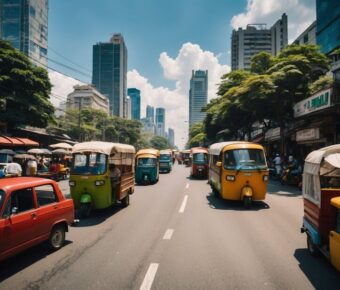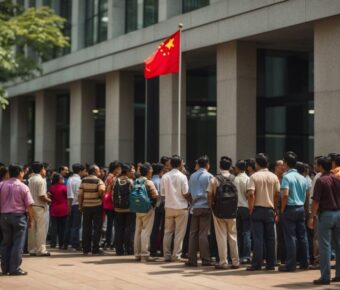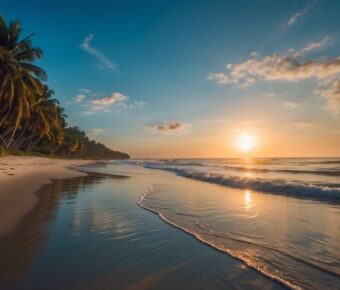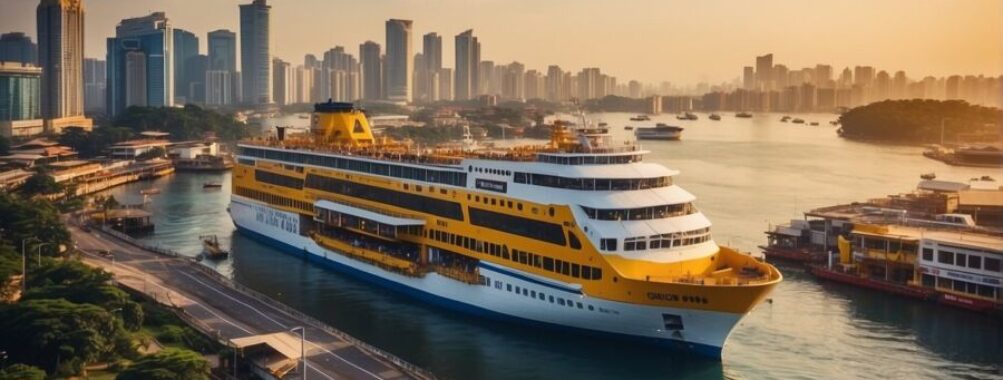
Vietnam Tour Packages: Exploring the Best of Southeast Asia
Vietnam emerges as a top destination for travelers seeking a blend of vibrant culture, rich history, and stunning natural landscapes. From the labyrinthine streets of Hanoi’s Old Quarter to the emerald waters of Ha Long Bay, the country offers an array of experiences that cater to diverse interests. Vietnam’s culinary scene is a feast for the senses, with regional dishes that reflect the country’s complexity and geographical variations. Tour packages typically aim to capture this diversity, offering itinerary options covering essential landmarks, hidden gems, and local living experiences, making travel planning seamless and comprehensive.
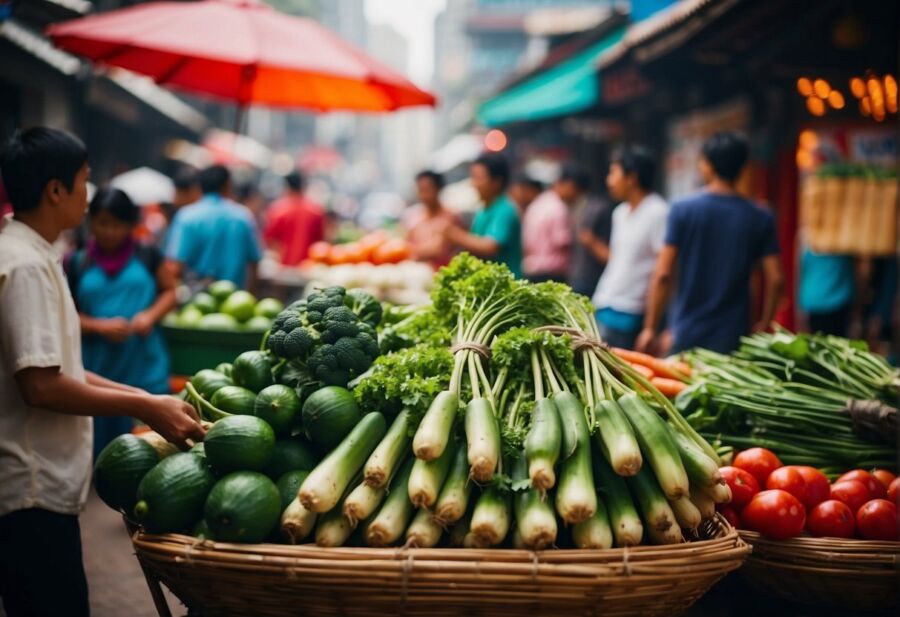
Travel agencies curate Vietnam tour packages that balance sightseeing, cultural immersion, and leisure. Options range from budget-friendly tours to premium experiences, including excursions to UNESCO World Heritage sites, cruises along the Mekong Delta, and explorations of the dynamic cityscapes. Each package is designed to offer a convenient way for visitors to explore the must-sees and lesser-known wonders of Vietnam, sometimes extending to neighboring countries like Cambodia and Laos for a more in-depth Indochina experience.
With Vietnam’s popularity as a travel destination, tour packages are diverse and increasingly customizable, ensuring that each traveler’s needs and preferences are met. Most packages include knowledgeable guides who enhance the journey with local insights, adding value to the experience. The offerings vary from short city breaks to extensive country-wide tours, allowing visitors to choose the duration and pace of their travel according to their interests and time constraints.
Contents
- Exploring Vietnam’s Rich Cultural Landscape
- Historical Highlights
- Cultural Festivities
- Local Arts and Crafts
- Vietnam’s Diverse Culinary Delights
- Street Food Gems
- Traditional Vietnamese Dishes
- Food Tour Experiences
- Vietnam Tour Packages Overview
- Tailor-Made Itineraries
- Group and Solo Options
- Tour Guide Insight
- Highlight Destinations in Vietnam
- Northern Wonders
- Central Charms
- Southern Treasures
- Adventure and Leisure Activities
- Trekking and Cycling Routes
- Beach Relaxation
- Cultural Workshops
- Planning Your Vietnam Journey
- Best Travel Times
- Accommodation Options
- Transportation Tips
- Vietnam Travel Essentials
- Travel Documentation
- Health and Safety
- Packing List
- Choosing the Right Tour Operator
- Reputable Companies
- Customer Reviews
- Tour Inclusions
- Sustainable and Responsible Travel
- Supporting Local Communities
- Eco-Friendly Practices
- Insider Tips and Recommendations
- Language and Communication
- Shopping and Bargaining
- Off-the-Beaten-Path Experiences
- How helpful was this article?
Exploring Vietnam’s Rich Cultural Landscape

Vietnam’s diverse cultural heritage is spotlighted through its historical monuments, vibrant festivals, and authentic local arts and crafts. These elements collectively offer an immersion into the rich tapestry of Vietnamese traditions and history.
Historical Highlights
Hanoi serves as the historical hub of Vietnam, boasting an array of well-preserved colonial buildings, ancient pagodas, and the notable Old Quarter, which brims with history. In Hue, they find the Imperial City, an expansive complex of palaces and temples that stood as the political and cultural heart of the last dynasty. Meanwhile, Hoi An reflects the rich history of a trading port dating back to the 15th century with well-preserved buildings and a unique blend of cultural influences.
Cultural Festivities
Vietnam’s culture comes to life during festive seasons. One can witness the Vietnamese New Year, known as Tet, which encapsulates the importance of family and tradition in Vietnamese culture. The Mid-Autumn Festival, another important celebration, is observed with lion dances, lanterns, and mooncakes. Hoi An lights up during the Full Moon Lantern Festival, creating an enchanting atmosphere with floating lanterns on the river.
Local Arts and Crafts
Vietnam is home to 54 ethnic groups, each with distinctive arts and crafts. In regions like Sapa, one can explore the textile patterns and fabric-weaving techniques of the Hmong and Dao peoples, with their vibrant colors and intricate designs. Traditional crafts such as lacquerware, silk painting, and ceramic production can be found throughout Vietnam, but are particularly prominent in Hanoi and villages around Hue. Tourists have the opportunity to purchase these local arts as a memento of Vietnam’s rich cultural landscape.
Vietnam’s Diverse Culinary Delights

Vietnam offers a vast array of culinary experiences, from the bustling street food stalls to the traditional dishes that have been passed down through generations. Food tours across the country showcase the depth and variety of Vietnamese cuisine, revealing dishes beyond the globally recognized pho.
Street Food Gems
Vietnamese street food is renowned for its vibrant flavors and accessibility. Pho, a noodle soup with a rich, aromatic broth, is a staple found throughout the country. Food enthusiasts often explore the local markets and streets on Vietnam tours to discover regional specialties such as bánh mì, a flavorful sandwich influenced by French colonists that combines meats, vegetables, and sauces in a crisp baguette.
- Hanoi: Known for its cha ca, grilled fish with turmeric and dill.
- Ho Chi Minh City: Famous for banh xeo, a crispy crepe filled with shrimp and bean sprouts.
Traditional Vietnamese Dishes
Beyond street food, traditional Vietnamese dishes reflect the country’s diverse geography and history. Each region contributes unique ingredients and techniques to Vietnam’s culinary portfolio.
- Northern Vietnam: Emphasizes subtle flavors with dishes like bun cha, grilled pork served over vermicelli noodles.
- Central Vietnam: Known for bolder, spicy flavors with dishes such as bun bo Hue, a spicy beef noodle soup.
- Southern Vietnam: Offers sweeter dishes, exemplified by canh chua, a sour fish soup with tamarind.
Food Tour Experiences
Opting for specialized culinary tours provides a deeper insight into Vietnam’s food scene, guided by local knowledge. Participants often have the chance to:
- Join cooking classes to learn traditional cooking methods.
- Visit homes of local families to experience authentic meals.
- Explore regional differences in cooking styles and flavor profiles.
Additionally, food tours often include tastings of lesser-known dishes, giving travelers a comprehensive taste of Vietnamese cuisine’s diversity.
Vietnam Tour Packages Overview

Vietnam tour packages offer an extensive range of experiences, from the bustling streets of Hanoi to the tranquility of Halong Bay. The itineraries are designed to cater to different preferences and travel styles, whether through personalized journeys, group adventures, or solo explorations, all enriched by the insights of experienced tour guides.
Tailor-Made Itineraries
Tailor-made Vietnam tour packages allow travelers to customize their experiences to fit their individual interests and schedules. From cultural immersions in the ancient town of Hoi An to culinary excursions in the vibrant markets, personalized itineraries address the specific desires of each traveler.
- Personalization:
- Destinations
- Duration
- Activities
- Budget: Ranges from economical to luxury
Group and Solo Options
Vietnam offers a variety of tour packages suitable for both group and solo travelers. Group tours provide an opportunity to meet like-minded individuals and reduce individual costs, while solo tours offer complete freedom and flexibility.
- Group Tours:
- Fixed itineraries
- Social interaction
- Cost-effective
- Solo Tours:
- Customization
- Independence
- Personal growth
Tour Guide Insight
Tour guides are an integral part of Vietnam tour packages, enhancing the travel experience with their local knowledge and expertise. They provide valuable context to the sights and sounds of Vietnam, from history-laden landmarks to the intricacies of local cuisine.
- Guide Roles:
- Cultural ambassador
- Navigational aid
- Benefits:
- Authentic experiences
- Deeper understanding
Highlight Destinations in Vietnam

Vietnam’s diverse landscape offers travelers an array of majestic sites ranging from the rice terraces in the north to the vibrant river life in the south.
Northern Wonders
The North of Vietnam is known for its culturally rich capital, Hanoi, and the astonishing natural beauty of Halong Bay, recognized globally for its emerald waters and thousands of towering limestone islands. Sapa, famous for its terraced rice fields and ethnic diversity, along with the serene beauty of Ninh Binh, often referred to as “Halong Bay on Land,” are must-visit destinations.
- Hanoi: The capital city, offering bustling streets, colonial history, and vibrant nightlife.
- Halong Bay: A UNESCO World Heritage Site with its iconic limestone karsts.
- Sapa: Home to stunning terraced fields and diverse cultural heritage.
- Ninh Binh: Features a landscape of impressive limestone outcrops and serene rivers.
Central Charms
In Central Vietnam, the historical city of Hue boasts ancient architecture and the Imperial City. Coastal city Da Nang serves as a gateway to both the ancient town of Hoi An and the white sands of Nha Trang.
- Hue: The former imperial capital with its famed Citadel and royal tombs.
- Da Nang: A modern city known for the Dragon Bridge and proximity to cultural sites.
- Hoi An: A well-preserved example of a Southeast Asian trading port with a unique blend of architectural styles.
- Nha Trang: A beach destination combining coastal relaxation with a vibrant nightlife scene.
Southern Treasures
Ho Chi Minh City (formerly Saigon) encapsulates the fast-paced urban lifestyle while retaining remnants of its French colonial past. The Mekong Delta provides a stark contrast with its vast network of rivers and rice paddies, offering a glimpse into rural Vietnamese lifestyles.
- Ho Chi Minh City: Vietnam’s largest city, filled with energetic markets and historical landmarks.
- Mekong Delta: Known for its maze of rivers, swamps, and islands featuring traditional villages and floating markets.
Adventure and Leisure Activities

Vietnam, with its diverse landscapes and rich culture, offers a plethora of adventure and leisure activities tailored to cater to both thrill-seekers and those looking for a tranquil retreat.
Trekking and Cycling Routes
Vietnam’s terrain presents numerous trekking and cycling opportunities. Trekking tours in the northern province of Ha Giang showcase the region’s rugged beauty, with the terraced fields and enigmatic karst mountainscape being particularly notable. The Ta Xua Nature Reserve is also famous for its dinosaur backbone trek, giving adventurers a glimpse into the country’s prehistoric past set against majestic vistas.
For cycling enthusiasts, routes take them through the heart of the countryside, down coastal trails and into culturally-rich urban centers. Paths winding through the Mekong Delta reveal a patchwork of rice fields, whereas the historic Ho Chi Minh trail offers an off-road escape into the country’s storied past and vibrant present.
Beach Relaxation
Vietnam’s coastline boasts over 3,000 kilometers of shoreline featuring serene beaches perfect for relaxation. Notable beach destinations include Da Nang, with its soft sands and calm waters, and Phu Quoc Island, an idyllic setting for sunbathing and water activities. Accommodation options vary from luxury resorts to beach-side bungalows, providing a restful haven for every budget and preference.
Cultural Workshops
Those itching for a cultural immersion find it through cultural workshops integrated within some tour packages. Visitors can experience the craftsmanship of local artisans in Hoi An, where traditional lantern-making workshops illuminate the intricate artistry of Vietnam. Additionally, homestays in the Mekong Delta may offer cooking classes, where travelers learn to prepare regional dishes, fostering a deeper connection with Vietnamese culture.
Planning Your Vietnam Journey

When visiting Vietnam, one must consider several key aspects to ensure a seamless and enriching travel experience. From determining the optimal travel times to selecting accommodations and understanding transportation within the country, careful preparation enhances the enjoyment of the journey through this vibrant part of Southeast Asia.
Best Travel Times
In Vietnam, the climate varies from the north to the south. The best time to tour the country is during spring (February to April) and autumn (August to October), offering more moderate temperatures and less rainfall. These periods are ideal for a comprehensive itinerary that includes popular regions such as Hanoi, Halong Bay, and Ho Chi Minh City.
Accommodation Options
Vietnam offers a wide range of accommodations, catering to different preferences and budgets. Travelers can choose from:
- Budget: Hostels and guesthouses, often under $20 USD per night.
- Mid-range: Three-star hotels, averaging $20-$50 USD per night.
- Luxury: Five-star hotels and resorts, usually above $100 USD per night.
Booking in advance is advisable, especially during peak season, to secure quality lodgings.
Transportation Tips
Moving around Vietnam is an integral part of the travel experience. Here are popular modes of transport:
- Planes: For long distances, internal flights are time-efficient.
- Trains: The Reunification Express connects Hanoi and Ho Chi Minh City.
- Buses: Budget-friendly and extensive network covering major and remote areas.
- Motorbikes: Renting motorbikes gives travelers flexibility for local exploration.
Each mode of transport provides a different perspective of Vietnam’s diverse landscapes and is worth considering when planning the trip’s itinerary.
Vietnam Travel Essentials
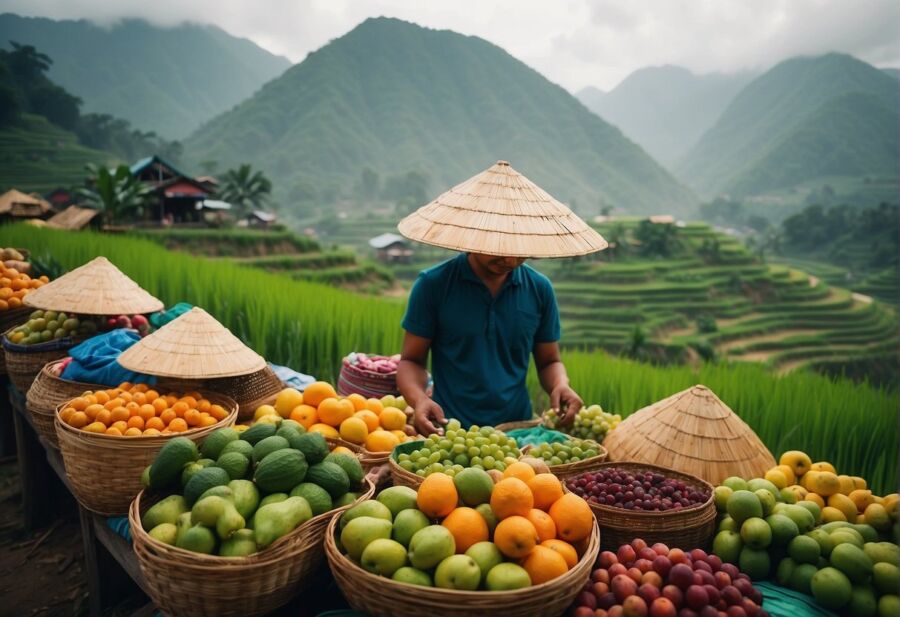
When planning a trip to Vietnam, travelers need to consider essential documentation, health precautions, and items to pack. These essentials ensure a smooth journey.
Travel Documentation
Foreign travelers require a passport with a minimum of six months validity beyond their planned date of exit. Most travelers from the USA will also need a visa or an approval letter for a visa on arrival. Before departure, they should check their eligibility for an e-visa, which can be applied for online and is available for citizens of 80 countries.
Health and Safety
Travelers should consult a healthcare provider for recommended vaccinations, such as Hepatitis A and Typhoid, at least a month before departure. Carrying a basic first aid kit and a personal supply of prescription medications is advisable.
Insect repellent is essential; dengue fever and malaria are present in Vietnam. Insurance that covers medical treatment and evacuation is highly recommended. For safety, travelers should keep valuables secure and maintain awareness of their surroundings, especially when navigating busy city streets.
Packing List
When packing for Vietnam, consider the regional climates and pack accordingly. The north can be cool during winter, while the central and southern regions are typically hot and humid year-round.
Here’s a basic packing list:
- Clothes: Lightweight and breathable clothing; a waterproof jacket; layers for cooler northern regions
- Electronics: Phone, charger, power bank; travel adapter for Type A, C, and F plugs
- Toiletries: Sunscreen, insect repellent, personal hygiene items
- Miscellaneous: Sunglasses, hat, comfortable walking shoes
Remember to leave space for souvenirs and gifts, as shopping can be a delightful Travel Talk topic with locals, showcasing the rich culture and craftsmanship of Vietnam.
Choosing the Right Tour Operator
When selecting a tour operator for a Vietnam trip, travelers should focus on company reputation, customer feedback, and tour inclusions to ensure a well-rounded travel experience.
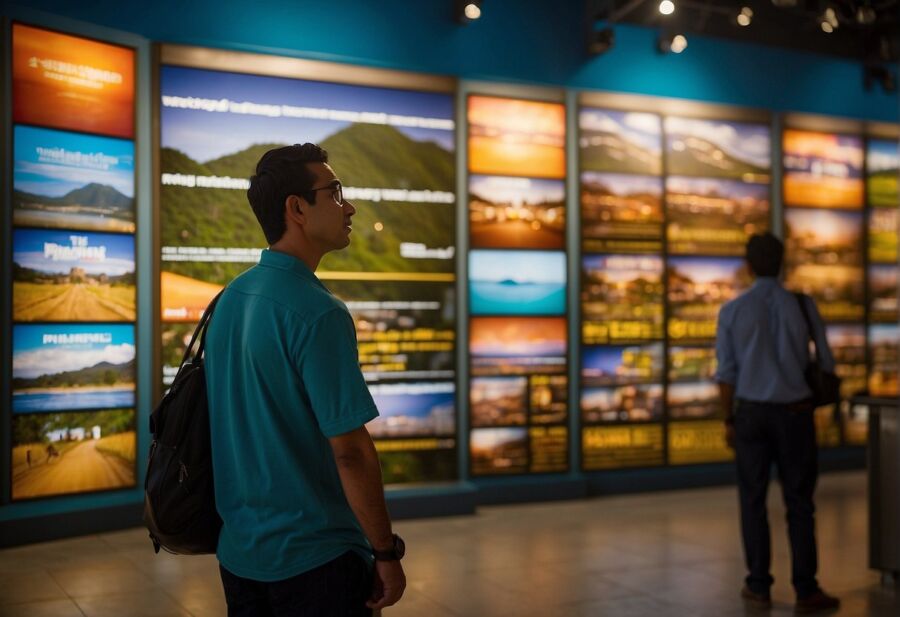
Reputable Companies
Travelers should seek out tour operators known for their expertise and reliability in the Vietnam travel market. Intrepid Travel is acclaimed for its family-friendly and adventurous tours, while G Adventures caters particularly to the needs of younger travelers seeking group experiences. Bravo Indochina Tours specializes in historical explorations, making them a strong candidate for history enthusiasts.
Customer Reviews
Prospective travelers must examine customer reviews to gauge the quality of service and experiences provided by tour operators. Intro Travel has received notable reviews, particularly for ensuring inclusivity and delivering a high level of enjoyment, as evidenced by their 4.8 rating out of 338 reviews. This suggests a consistent level of customer satisfaction.
Tour Inclusions
In evaluating tour inclusions, it’s essential to consider the specifics of what each package offers. Legend Travel Group and Contiki are two operators that provide detailed itineraries for various interests and budgets. Intro Travel’s tours, for instance, often include destinations such as Hanoi and Halong Bay, with clear pricing structures, often cited on a per-day basis to aid in budgeting.
Sustainable and Responsible Travel

Sustainable and responsible travel in Vietnam emphasizes the well-being of local communities and the preservation of the environment, ensuring that tourism has a positive impact on the country’s natural and cultural landscapes.
Supporting Local Communities
When travelers choose tours in Vietnam that prioritize supporting local communities, they engage with initiatives that directly benefit the livelihoods of the locals. Tour companies often collaborate with villages to create experiences like Mai Chau’s Blue H’mong New Year Celebration, allowing visitors to partake in genuine cultural festivities. This not only provides a deeper understanding of local knowledge but also aids in sustaining traditions and generating income for the community members.
- Local Engagement: Activities such as cooking classes with Hanoian housewives.
- Reinvestment: Portion of tour costs directed back into community projects.
Eco-Friendly Practices
Tour packages promoting eco-friendly practices focus on minimizing the environmental footprint of travelers. They incorporate elements aimed at the conservation of nature, like visiting and supporting national parks and UNESCO sites. Sustainable Vietnam tours might include stays in accommodations that adhere to green standards and utilize sustainable transport methods when possible.
- Accommodations: Eco-lodges or hotels with recognized environmental certification.
- Transportation: Use of bicycles or electric vehicles for short distances.
Insider Tips and Recommendations

When traveling to Vietnam, it is crucial to know the local customs, language nuances, and hidden gems to enhance one’s experience.
Language and Communication
In Vietnam, the most widely spoken language is Vietnamese. However, English is frequently used in major tourist areas, and service staff often have a basic to moderate command of the language. For those who speak German or Chinese, there are fewer speakers, but guides and some hotels in major cities may provide services in these languages. Carrying a phrasebook or a language translation app can be extremely helpful, especially in rural areas.
Shopping and Bargaining
Shopping in Vietnam is a vibrant affair, with bustling markets and boutique shops. Bargaining is a part of the culture, but it should be done respectfully and with a smile. For items like clothing, souvenirs, and handicrafts, tourists should expect to negotiate prices down. When purchasing higher-value items, such as jewelry or art, being aware of the market value and starting the bargain at 50% of the offered price is a good strategy.
- Remember:
- Start negotiations at about 50% of the initial price.
- Compare prices at different stalls for the best deal.
- Use simple phrases in Vietnamese for a positive interaction.
Off-the-Beaten-Path Experiences
For those seeking unique experiences beyond the usual tourist trails, Vietnam offers plenty of off-the-beaten-path adventures. Travelers can explore the rural homestays with locals to get an authentic glimpse of Vietnamese life. They might also consider booking a motorbike tour to navigate through scenic routes such as the Hai Van Pass or remote northern territories. To truly immerse in local culture, timing a visit with major festivals can provide unforgettable moments.
How helpful was this article?
We love feedback! How helpful was this article?
Provide your vote!
Drag the slider and make your travel voice heard.
Note: You only get one vote.
Thank you!
Your voice matters in providing authentic travel experiences.
Sorry.
Exceeded the limit of votes from one IP.

